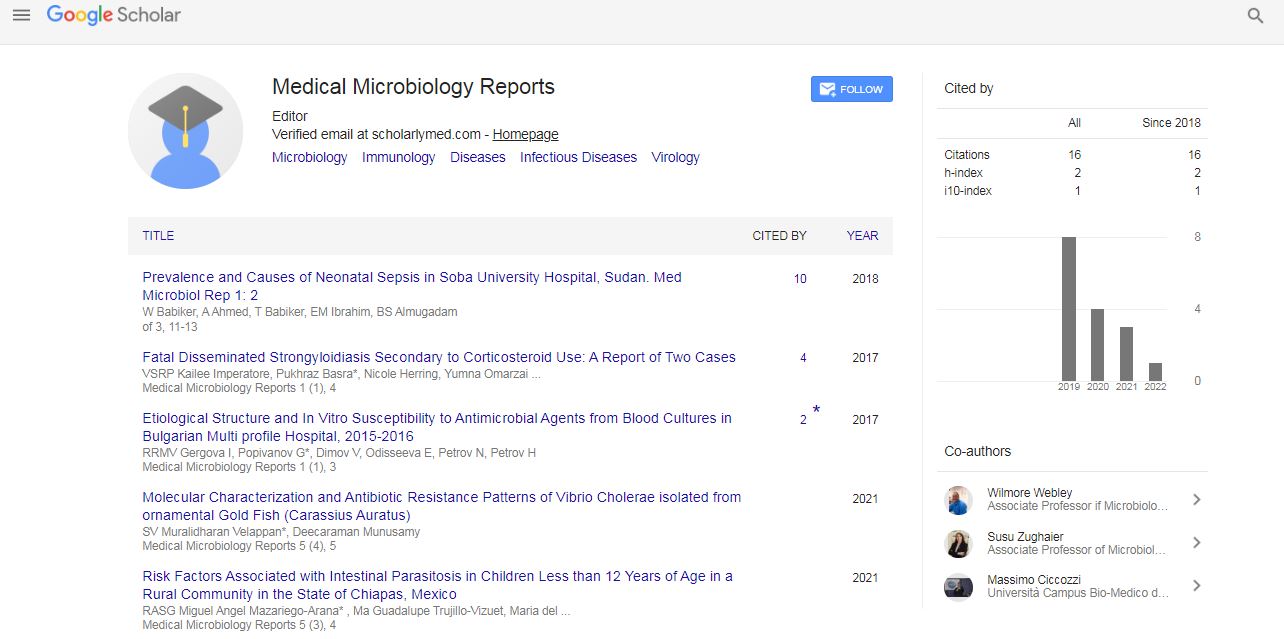Gaps and lapse in population based childhood vaccination coverage, lessons learned for building national capacity
Taryam MMO, Al Faisal W, Hussein HY, Wasfy AS and AlSalaq A
Dubai Health Authority, UAE
Dubai Statistics Centre, UAE
: Med Microbiol Rep
Abstract
Background: The best way to protect children from 14 serious childhood diseases is to maintain the recommended immunization periodicity and administer all of the recommended immunizations by age. A number of barriers to immunization have been identified as the primary reasons. Overall, parents and caregivers believe that vaccines are necessary to prevent disease and are important to children’s health, but a common misconception is that multiple vaccines can overwhelm the immune system. Objectives: To study the immunization coverage among childhood population in Dubai, and to identify the gaps and lapse in immunizations process in Dubai. Methods: Dubai Household Health Survey was conducted in 2014 as a Cross-sectional, multistage, stratified, Cluster survey. Houses were visited to obtain detailed information on the different health-related issues; one of them is vaccination coverage. According to Dubai Statistical center, the total population of Dubai at the end of 2014 was 2327350 (males 1613175, females 714175) (UAE 212000, Expatriates 2115350). Children aged below five years of age were investigated for immunization coverage according to expanded immunization national program requirements. All children vaccination registry booklet were inspected and questionnaire with socio-demographic as well as other health related set of data were collected by well-trained data collectors from the field. Data were analyzed using SPSS 21. Results: The study revealed that the total vaccination coverage rate for the children below 5 years of age with EPI vaccine requirements in Dubai (Both Male and Female, UAE nationals and Expatriate) was 83.1% as shown by table 1, about 83.5% for Emirati and 82.5% coverage for expatriate. The total coverage rate among Emirati males was 81.8%, while among Emirati females it was 85.1%, while it was equally distributed as per male and female coverage rate among Expatriates (82.5%). Conclusion: The study concluded that there are still significant gaps and lapse in immunization coverage regardless of the huge health system efforts to targeting children population with adequate and recommended vaccines. Increased anxiety about the effects and pain associated with multiple injections may be the causes behind those gaps. Additionally, the large number of routine vaccines has made it increasingly difficult for parents to track and ensure adequate, timely administration. Frequent catch up vaccination campaigns needs to be activated to bridging the gaps in immunizations coverage along with strengthening the immunization surveillance system.
Biography
E-mail: hussainh569@gmail.com
 Spanish
Spanish  Chinese
Chinese  Russian
Russian  German
German  French
French  Japanese
Japanese  Portuguese
Portuguese  Hindi
Hindi 
